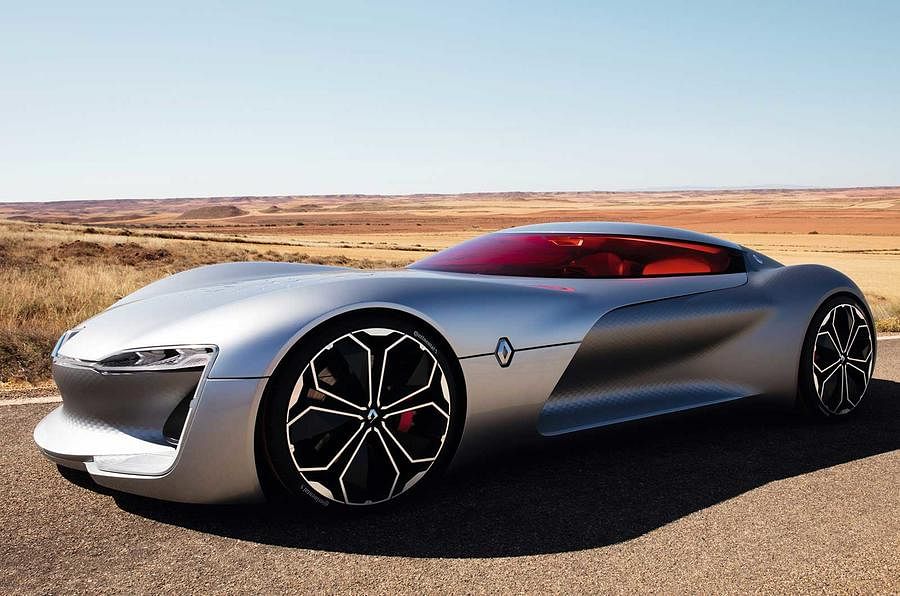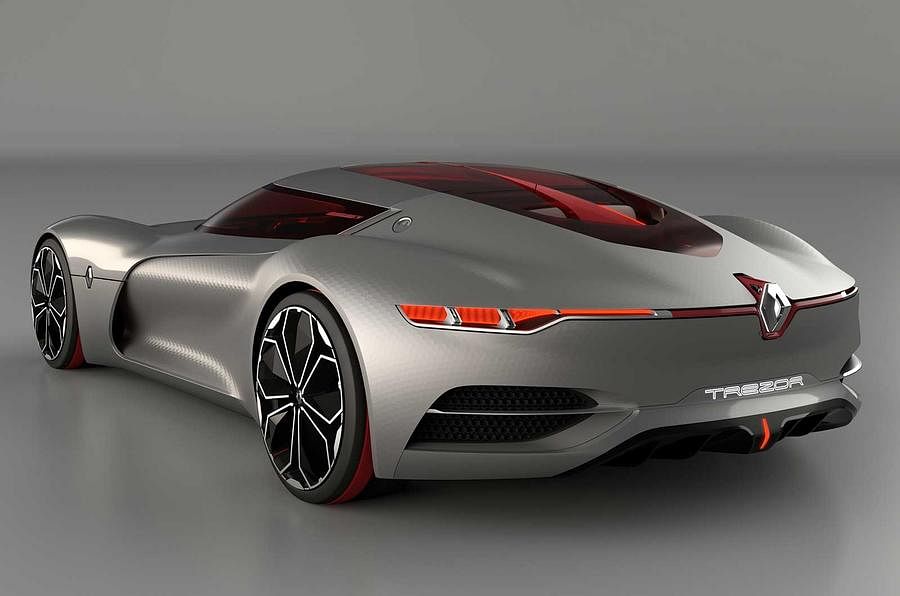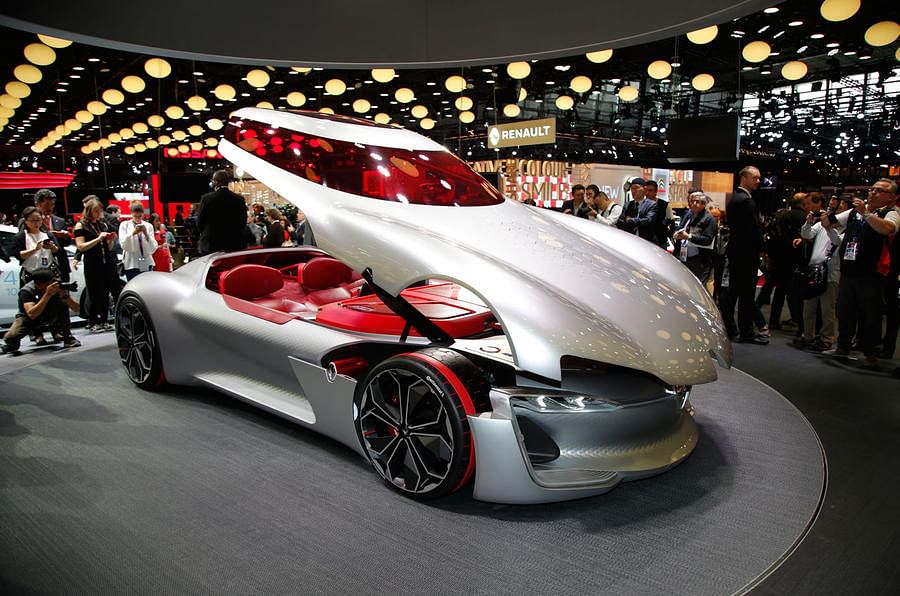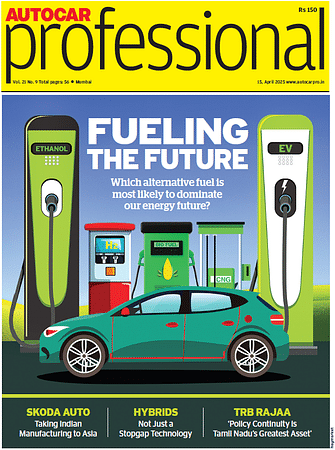Renault Trezor concept previews 'big changes' in tech and design
Striking high-performance, electric two-seater concept is set to shape the styling of Renault’s future production models and previews its next-generation design language.
Renault has previewed its next-generation design language with the unveiling of a high-performance electric two-seater GT concept at the Paris Motor Show.
The sleek coupé, called Trezor, which means ‘treasure’ in French, is the latest creation of design boss Laurens van den Acker, who has held the role at Renault since 2009.
Over the past six years and using the design language pioneered in 2010’s Dezir concept, to which the Trezor is clearly and deliberately linked, van den Acker has restyled every production Renault. He recently signalled the completion of his journey by unveiling a lightly revised version of the 2012 Clio. Now the cycle begins again, with the Trezor design study hinting at what will follow. “It signals a new beginning, not an end,” said van den Acker.
“This car aims to appeal to the emotions, like everything we do,” said van den Acker. “But it also investigates urgent questions, like how you configure lights for next-generation cars, how you accommodate passengers in a car that has an autonomous mode and how you integrate information screens into interiors without making them look alien. With due respect to Dezir, Trezor has a little less beauty but a lot more brains.”

Trezor’s looks begin with its proportions. At 4700mm in length it’s nearly as long as a Range Rover Sport, but its height of 1080mm makes it one of the lowest cars on the road. There are big, confident bulges over the front wheels and powerful haunches at the rear. The short fastback tail ends in a horizontal semi-circle just behind the wheels and the drag coefficient is just 0.22.
The 2776mm wheelbase is longer than that of a Range Rover Sport but the overhangs are tiny. The concept rides on 21-inch front and 22-inch rear wheels with gaps between spokes that make the shape of the Eiffel Tower, plus carbonfibre scoops to aid brake cooling.
The Trezor’s chassis consists a central carbonfibre spine that connects to steel frames front and rear which carry the independent suspension. The rear wheels are driven by a single 350bhp Formula E motor mounted behind the occupants. Despite the two large batteries, one front and one rear, the kerb weight is just 1600 kilograms, meaning the car accelerate from 0-100kph in less than four seconds.

Laurens van den Acker describes the styling as “warm, simple and sensual”, but the sheer extravagance of the curves is what gives the big coupé its presence. The huge, one-piece powered door opens forwards to reveal a step-in cockpit with two deep and inviting leather-trimmed bucket seats, designed to provide comfort either when the car is being driven or in its selectable autonomous mode.
Instrumentation is entirely screen-based, with two large displays on the dashboard and three smaller ones across the rectangular steering wheel. The dash uses laminated ash wood, produced with the help of a French specialist, Keim Cycles, which makes £8500 (Rs 8.36 lakh) wooden bicycle frames.
Also revealed when the door opens is a finely crafted wooden-framed luggage compartment, with space for two suitcases. Head restraints for the occupants are also carried on wooden frames. The Electric Trezor previews Renault’s next-gen look Striking two-seater concept is set to shape the styling of Renault’s future production models and previews ‘big changes’ in technology and design clear message from Renault’s design department is that wood is a modern material, far from finished in cars.
The Trezor’s controls are mostly app-based, with icons to enable desired functions. In autonomous mode, the steering wheel widens, like the curtains in a theatre, to give better visual access to the main fascia’s screens, on which the occupant might care to play a game or watch a movie.

There are a number of interesting design features. A Renault diamond set into the body sides flashes as the roof opens. The bonnet includes automatic scoops which open to provide cooling air to the battery when required. There are laser lights at the front while at the rear, fibre optic lights incorporate tiny laser beams as decorations. The whole lighting set assumes an all-enveloping ‘technical’ configuration when the car is in autonomous mode.
The Trezor will not appear in showrooms but it underscores van den Acker’s belief that there’s more mileage in the visual language he began to create for new Renault production cars six years ago.
“There are more big changes coming over the next few years,” said the design boss. “High technology will invade everything. As a designer we all have ideas about the direction of progress, but we can’t always be right so we use concept cars like Trezor to help us find answers. It’ll be interesting to see.
RELATED ARTICLES
Hyundai unveils next−gen highly efficient hybrid system
The next-gen hybrid system is claimed to offer 45% better fuel efficiency and 19% more power compared with ICE powertrai...
Horse Powertrain reveals hybrid conversion for electric cars
Engine-making joint venture of Geely and the Renault Group announces new hybrid powertrain that fits into the same space...
Aisin to produce hybrid motor for Mitsubishi in Thailand
The hybrid drive motor and gearbox, will be produced at Aisin Powertrain (Thailand) Co for use in the Mitsubishi XForce ...






 29 Sep 2016
29 Sep 2016
 6691 Views
6691 Views
























 Autocar Professional Bureau
Autocar Professional Bureau




